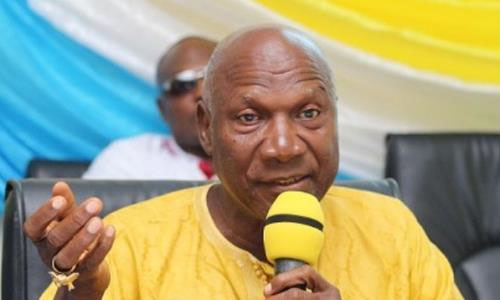Teachers, as employees, seem oppressed by their employers and their clients. I don’t envy Achimota School a bit. Maybe it should try to be a college, like Prempeh. It’s only an oppressor who would impose on employees thousands of adolescents of all kinds of psychological dispositions, physical looks and emotional tendencies.
The teacher is told children can all appear anyhow everyday within and out of sight. Whether it pleases the teacher’s eyes or not is moot. Thus, hair style would be imposed on the teacher who would be deprived of all her, or his, right to appreciate hair.
As someone who stands for inclusion, the issue is even more perplexing. I think, though, it’s because of the need to control appearance for effective teaching and learning that, for example, uniforms were invented. There are usually agreed rules and regulations for behaviour in school. Appearance, though, is of such a kind that unless care is taken, it tends to exclude where it should include.
Hair has usually been a schoolchild palaver. In primary school, ours was inspected for bushiness which attracted lice, and one was compelled to keep it low cut at all times. You couldn’t wear your hair fashionably in ‘tokyo joe’ cut or whichever and whatever was fashionable. That is why I thought schools and the teachers who work in them are allowed some room to control how their charges wear their hair.
Once I was going to drop off my niece in a high school high up in the mountains. On the way, I branched off to say hello to a friend Headmistress. After the hello, she decided to accompany us because she needed to see the Headmaster of my niece’s school.
An older niece was sitting next to me (driving) in the front passenger seat. She, as sign of respect, offered the seat to Madam Headmistress to sit beside me. Madam wouldn’t, and preferred sitting at the back with the schoolgirl.
Then there was this commotion in the back seat. ‘Is that the kind of hair you wear in school?’ the Headmistress asked my student niece. ‘It’s my natural hair,’ my niece had replied. ‘That’s a lie,’ yelled Madam Headmistress. ‘See the gel and it’s resultant curls,’ she continued. ‘You’re lucky you are not in my school. I would get a barber to cut the hair for you to pay.’ My niece cried the rest of the distance.
The confrontation had been all about hair discipline, which is practised in all schools that I know. Of course I don’t know about the international schools. When I used to teach at Akosombo, it wasn’t an international school so I wouldn’t know. As a non-international school then, hair discipline was enforced.
When we were young, Adwoa Bonsam wore mpɛsɛmpɛsɛ (dreadlocks) hair. Custom dictated she kept her hair the way akɔmfoɔ (traditional priests) wore theirs. Adwoa was the surviving third child after two earlier siblings had died. She needed uncaring treatment for that reason, so she would not die again and cause her parents more misery. She had been given that name Bonsam (devil), and made to look like one, so she would not die again.
Those were days of real school oppression. We were banned from wearing our normal clothing, which we tied around our necks, in school. We couldn’t speak the local language, our mother tongue, in school. Neither were we allowed to sing the ‘fetish’ songs we sang at home in school. We had to be taught new songs that pleased civilisation and the ears of the God the Christian imperialists had brought along with them.
A teacher would not record what a child would supply as the name given her/him by the parents. Instead, the teacher would ‘manufacture’ an alien name, presumably from the Bible, and add the child’s father’s name as her/his school register name. In our Akan culture, children didn’t necessarily carry the father’s name.
Anyway, no one pitied Adwoa’s plight and would deny her whatever possibility of being ‘liberated’ by schooling. Eventually, admission to the Methodist Primary School cost her, like it took everything our culture from us, the freedom to wear that hairdo. Some might think she was liberated from her parents’ imposed mpɛsɛmpɛsɛ.
One wonders which should come first; growing up together to live adult life together or growing up apart to live adult life together. It looks like Achimota sees the hair as fashion while Rastafarians see it as religion. I haven’t heard or read the pair were rejected for their religious beliefs. It looks to me more of appearance.
As AKORAs bare their teeth, Amanfoɔ are watching with interest. Among our educationists, I wonder whether any has undertaken a study on how well our separate education integrates or encourages separation/factionalism; divides or unites the nation. With all that is going on, some are asking whether humankind may have to think human wrong to balance human right.
It’s unfair that Achimota, with the longest applied inclusive admission policy, should be caught in this controversy of the diversity tyranny of the minority and the conformity tyranny of the majority. Since its beginning, it’s had a deliberate policy of ensuring it admitted students from all corners of the country. Changing times may be unnecessarily victimising its progressive admission policy.
With the motto: ‘Ut Omnes Unum Sint’ (That All May Be One), Achimota School has striven that school life would tolerate black and white, male and female; that everyone would ‘integrate for the good of all.’ It has done well and it should be encouraged, and never discouraged, to continue to do well.
By Kwasi Ansu-Kyeremeh


